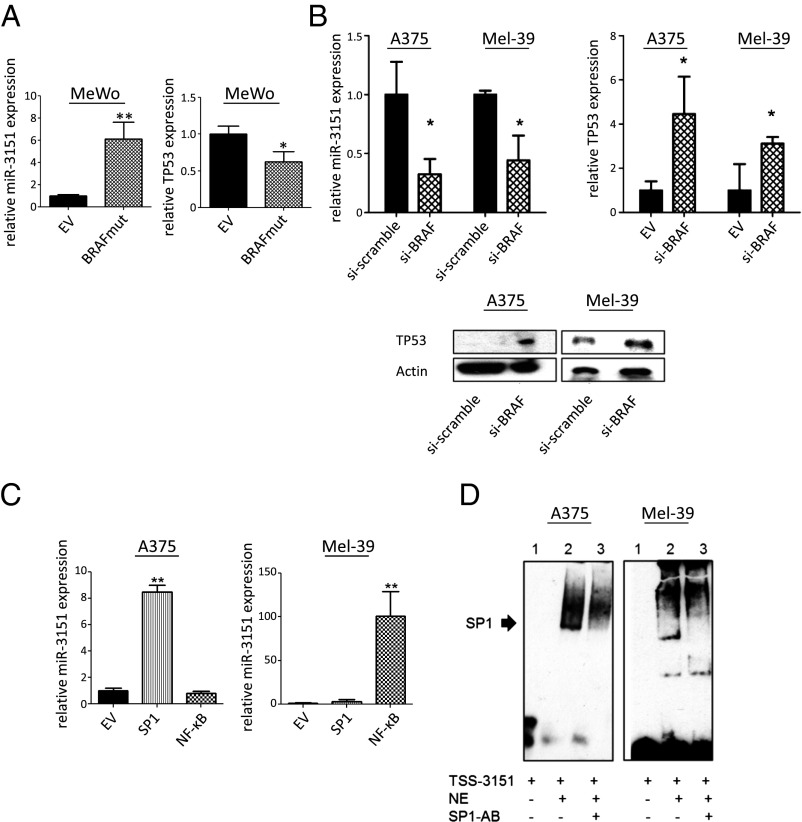Fig. 2.
Regulation of miR-3151 by BRAF-dependent and BRAF-independent mechanisms. (A) Effects of BRAFmut on miR-3151 expression and TP53 expression in BRAFwt MeWo cells. Upon introduction of BRAFmut, cells had increased miR-3151 expression and decreased TP53 expression. Three experiments, bars, mean ± SD; *P < 0.05, two-tailed t test. (B) Effects of BRAF knockdown (si-BRAF) on miR-3151 expression and TP53 expression in BRAFmut A375 and Mel-39 cells. In both cell lines, when BRAF was silenced, miR-3151 expression decreased, whereas TP53 expression increased at both the RNA and protein levels. Three experiments, bars, mean ± SD; *P < 0.05, **P < 0.005, two-tailed t test. Inset shows an example immunoblot of TP53 protein expression after BRAF knockdown. (C) Effects of forced SP1 and NF-ĸB expression on miR-3151 expression in A375 and Mel-39 cells. A375 cells responded preferentially to SP1 transfection, whereas Mel-39 cells responded to NF-ĸB transfection with miR-3151 overexpression. Three experiments, bars, mean ± SD; *P < 0.05, **P < 0.005, two-tailed t test. (D) Visualization of SP1 binding to miR-3151s transcription start site (TSS-3151) by using EMSA. Nuclear extracts (NE) were used from A375 and Mel-39 cells, shifting performed with SP1-antibody (SP1-AB). The SP1/ NF-ĸB transactivating complex was bound to TSS-3151 in A375 and Mel-39 cells.

